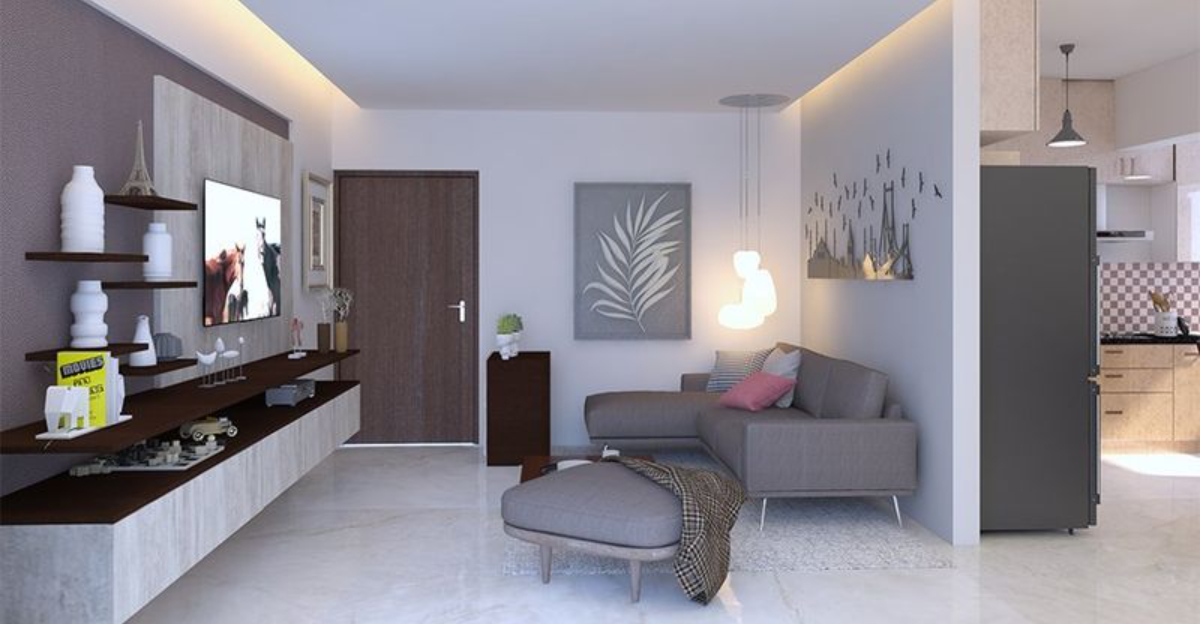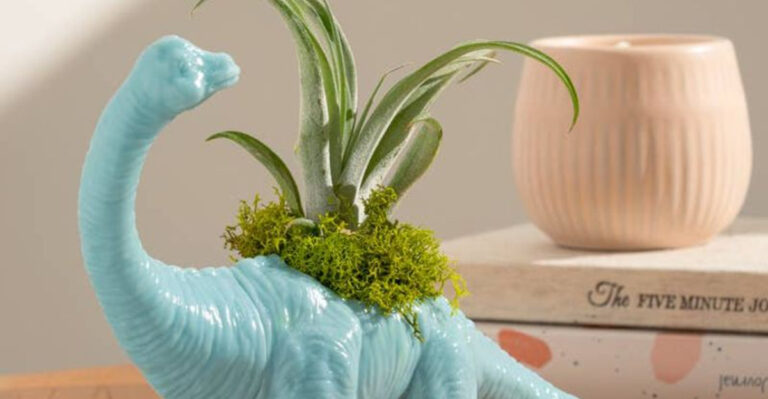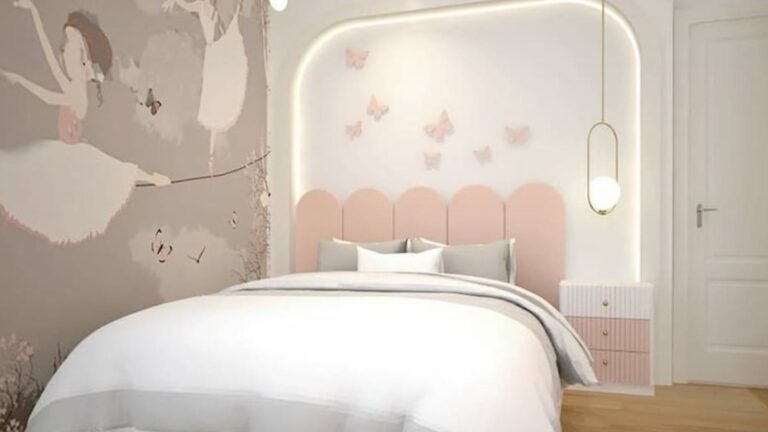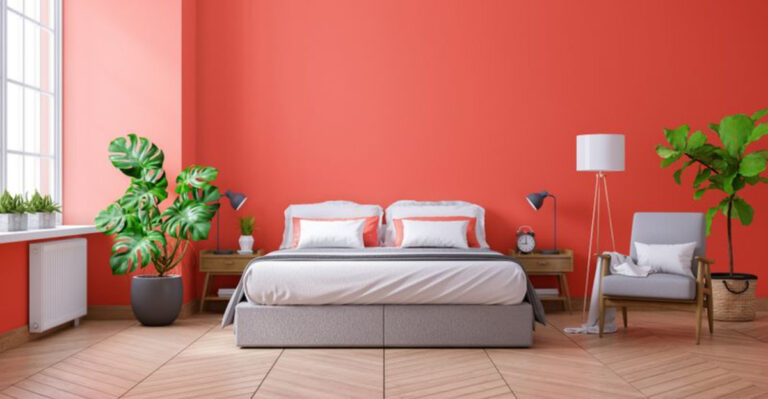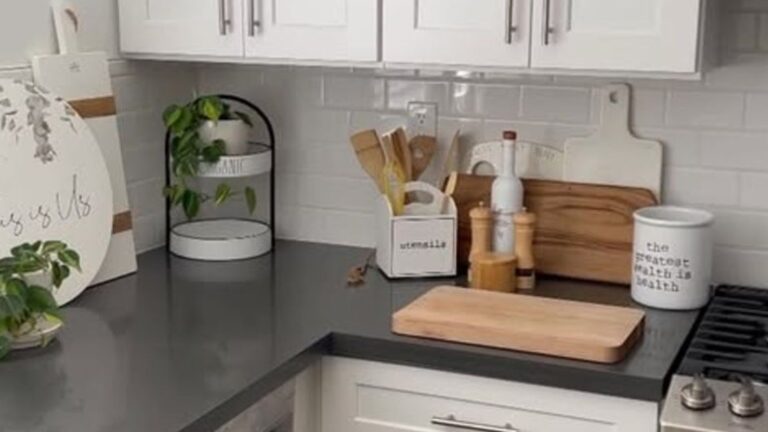18 Unique Alternative Ideas To Try Instead Of Cornicing
I’ve always loved the idea of adding a little drama to my ceilings, but traditional crown molding felt too expected, and honestly, a bit fussy for my style.
I know I’m not alone in wanting something fresh to give my walls and ceilings some character without the hassle or huge expense. Luckily, I’ve found some creative, budget-friendly alternatives that bring a unique touch to any room.
Whether you’re craving a sleek modern vibe or just want to break free from the same old cornicing, these ideas will help you redefine your space in a way that feels personal and exciting.
1. Picture Rail Molding

Picture rail molding sits lower on the wall than cornicing, creating a charming horizontal line around your room. Traditionally used for hanging artwork without damaging walls, it now serves as a stylish architectural feature on its own.
Paint it the same color as your walls for subtle sophistication, or make it pop with a contrasting hue. You can even use it to define a two-tone wall treatment, with different colors above and below the rail.
2. Wooden Slat Ceiling
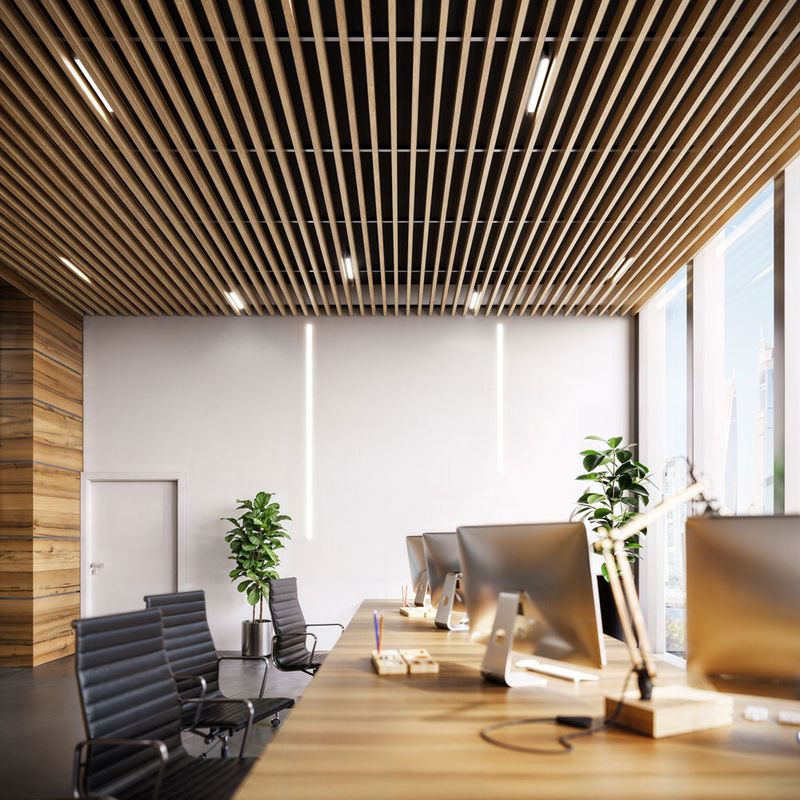
Wooden slats transform boring ceilings into architectural showpieces. These parallel wooden strips create depth, texture, and visual interest where plain drywall once lived.
Available in various woods from pine to walnut, slats can be spaced closely for a solid look or further apart for a more airy feel. They work wonders in contemporary spaces but can also warm up minimalist rooms with their natural texture.
3. Wallpaper Borders
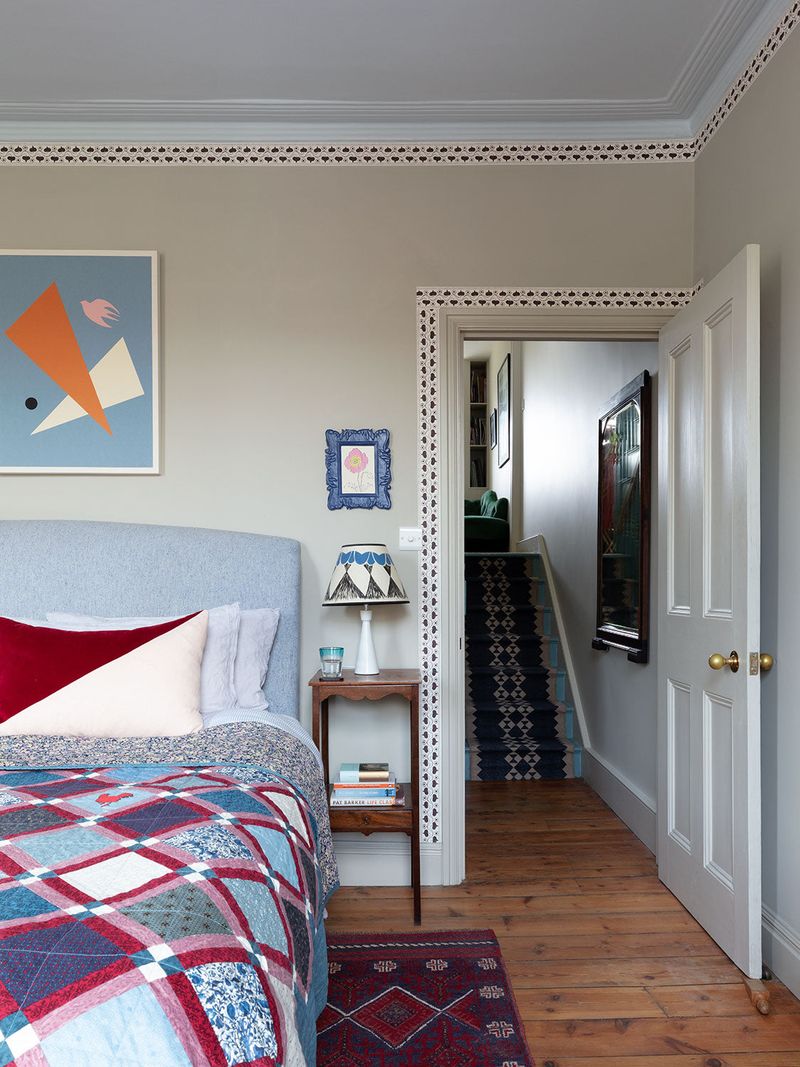
Wallpaper borders have made a comeback! These decorative strips come in countless patterns from floral to geometric, offering endless customization options.
Apply them where the wall meets the ceiling for a cornicing-like effect without the bulk. The flat profile works great in rooms with lower ceilings. Some borders even mimic architectural details like egg-and-dart molding or dentil trim at a fraction of the cost.
4. Painted Ceiling Borders
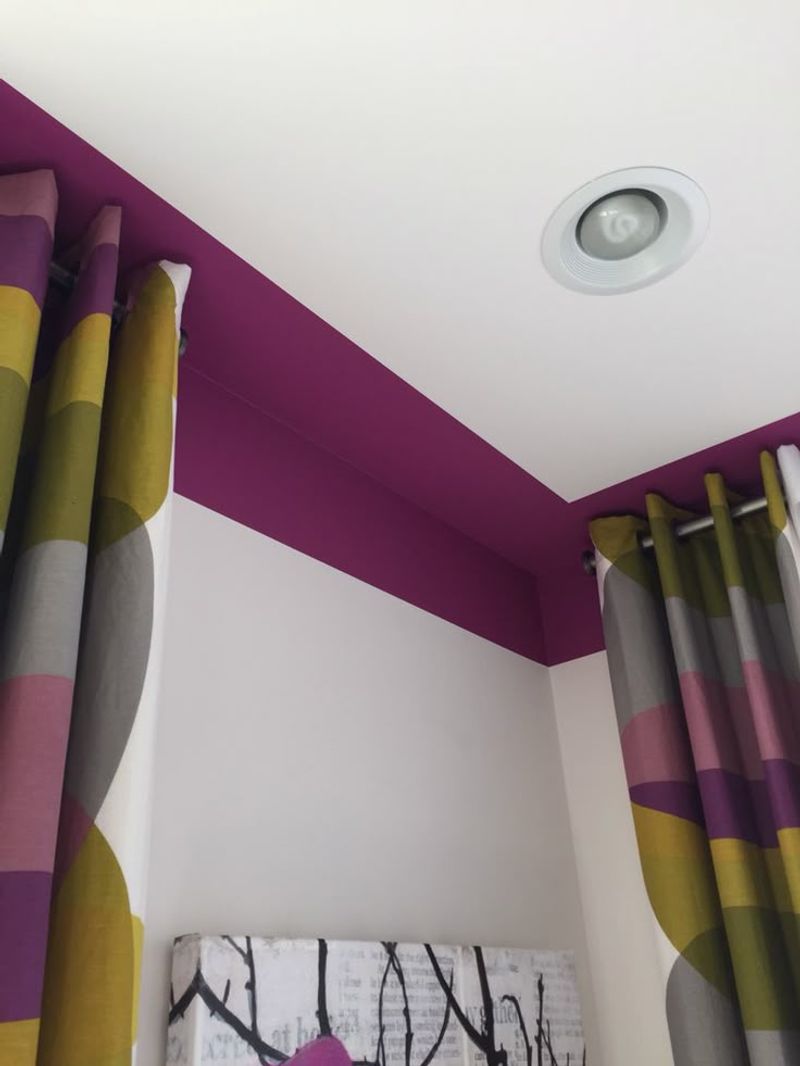
Grab some painter’s tape and transform your ceiling edge with a painted border! This budget-friendly option lets you add color and definition where walls meet ceiling.
Go bold with contrasting colors or subtle with tone-on-tone stripes. The beauty lies in its simplicity—just tape off your desired width, paint, and remove the tape for crisp lines. You can even create more complex patterns like Greek keys or scallops for added personality.
5. Rope Lighting Coves
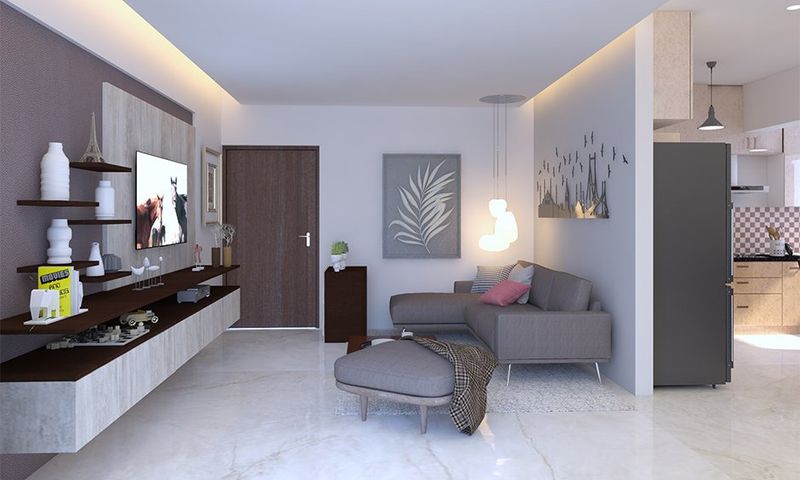
Light up your room edges with rope lighting coves! These simple recessed channels hold LED strips that wash your ceiling with a soft glow.
The effect creates visual interest while adding ambient lighting to any space. Unlike traditional cornicing, light coves serve a dual purpose as both decoration and illumination. Plus, with color-changing LEDs, you can switch the mood from warm white for everyday to festive colors for parties.
6. Fabric Ceiling Treatments
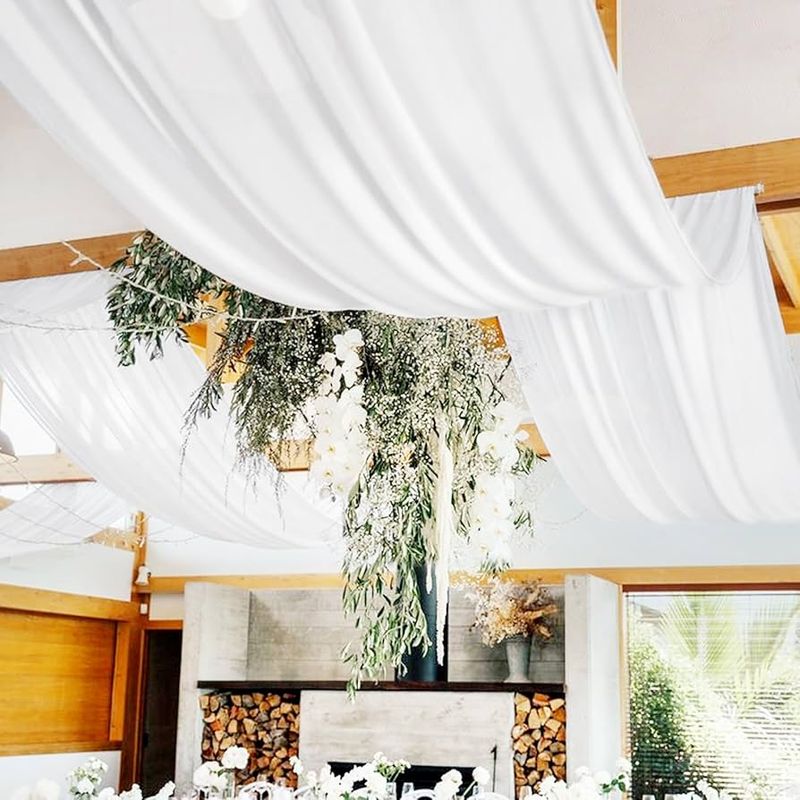
Fabric ceiling treatments add softness and acoustic benefits where cornicing would typically go. Think gathered fabric panels that create a tent-like effect or stretched fabric that hides uneven ceilings.
Hotels often use this technique for luxury suites. At home, it works wonders in bedrooms and media rooms where sound absorption matters. Choose lightweight fabrics like cotton or polyester in colors that complement your walls for a cohesive look.
7. Metal Trim Profiles
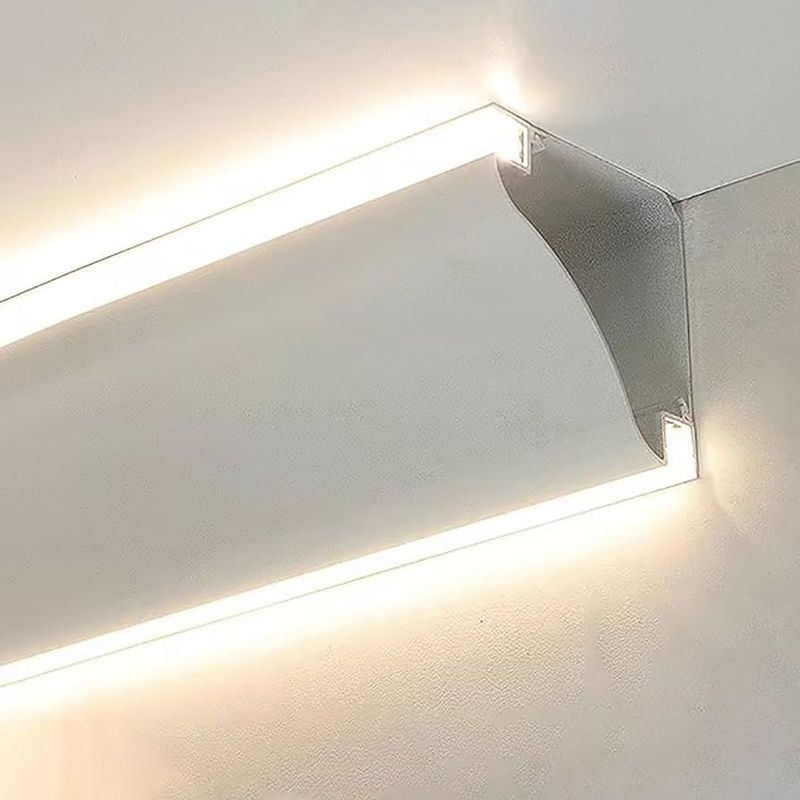
Metal trim profiles bring industrial chic to your ceiling edges. Available in aluminum, brass, copper, and steel, these sleek strips offer a contemporary alternative to plaster cornicing.
Their clean lines work beautifully in modern interiors. Some profiles include channels for LED strips, combining decoration with lighting in one streamlined package. Brushed nickel looks fantastic against gray walls, while warm copper complements earthy tones.
8. Exposed Beams
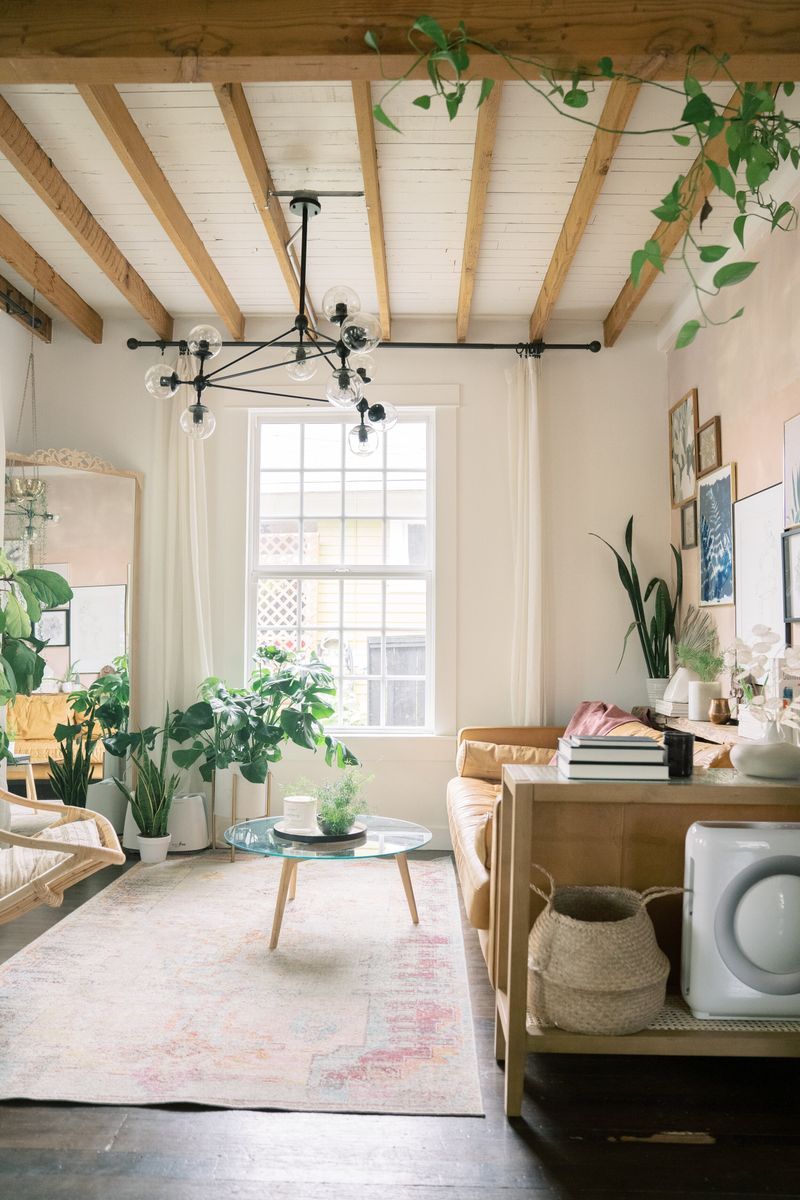
Exposed beams create character while eliminating the need for cornicing altogether. Whether real structural elements or faux beams made from lightweight materials, they add rustic charm and architectural interest.
Dark wood beams against white ceilings create dramatic contrast. For a cohesive look, match your beam finish to your flooring. Modern spaces benefit from clean-lined beams with minimal detailing, while country-style rooms look great with rougher, hand-hewn appearances.
9. Decorative Ceiling Tiles
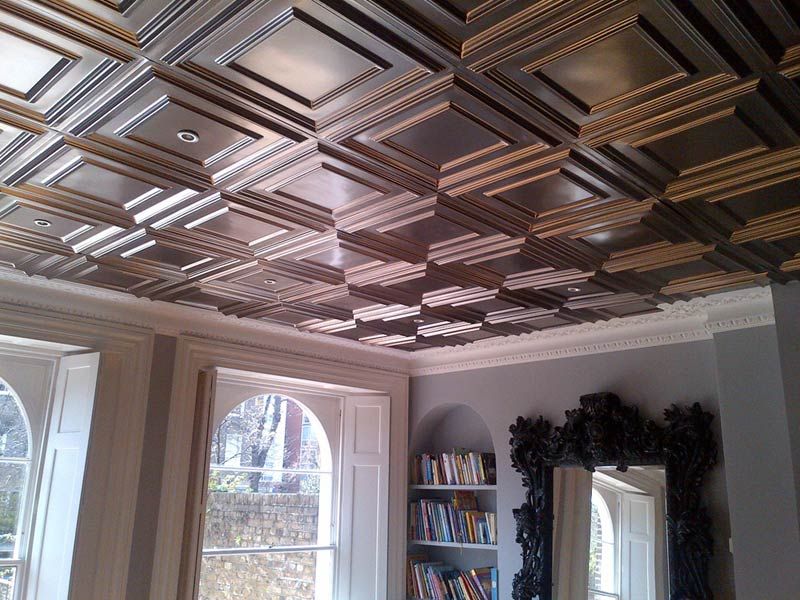
Decorative ceiling tiles extend from wall to wall, making cornicing unnecessary. Available in materials from tin to foam, these patterned squares transform ordinary ceilings into conversation pieces.
Victorian-inspired tin tiles add vintage charm to kitchens. Lightweight foam options install easily with adhesive and can be painted any color. Some homeowners install tiles only around the perimeter, creating a border effect that serves the same purpose as cornicing.
10. Wainscoting Extended Upward
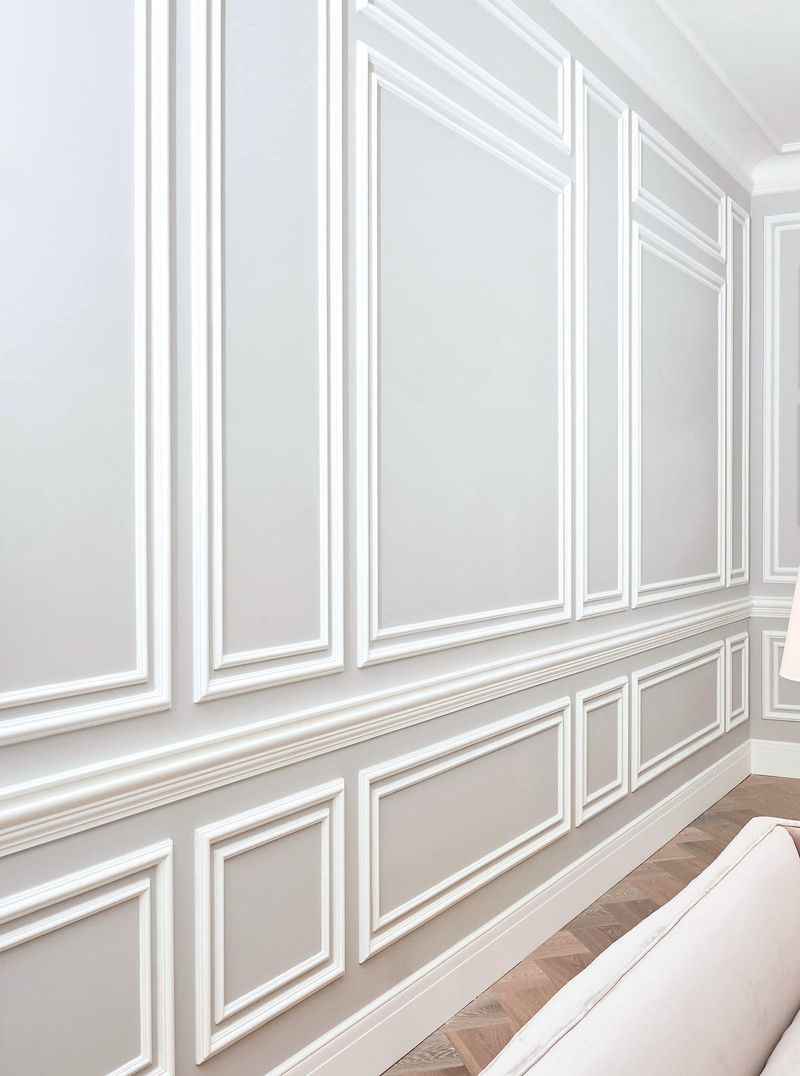
Flip traditional design on its head by extending wainscoting upward to the ceiling! This unexpected approach eliminates the need for cornicing while creating a distinctive architectural statement.
Panel molding installed in squares or rectangles on both walls and ceiling creates a cohesive, wrapped effect. Paint everything one color for sophisticated simplicity. This technique works particularly well in dining rooms and entryways where you want to make an impression.
11. Floating Shelves At Ceiling Height

Floating shelves installed near the ceiling line serve double duty as both storage and visual trim. They create a linear element similar to cornicing while offering space for books, plants, or collectibles.
Install them 12-18 inches below the ceiling for the best effect. Thin shelves with minimal brackets maintain a clean look. In kitchens, ceiling-height shelving showcases special dishes, while living rooms benefit from book displays or trailing plants that soften the room’s edges.
12. Stenciled Border Patterns
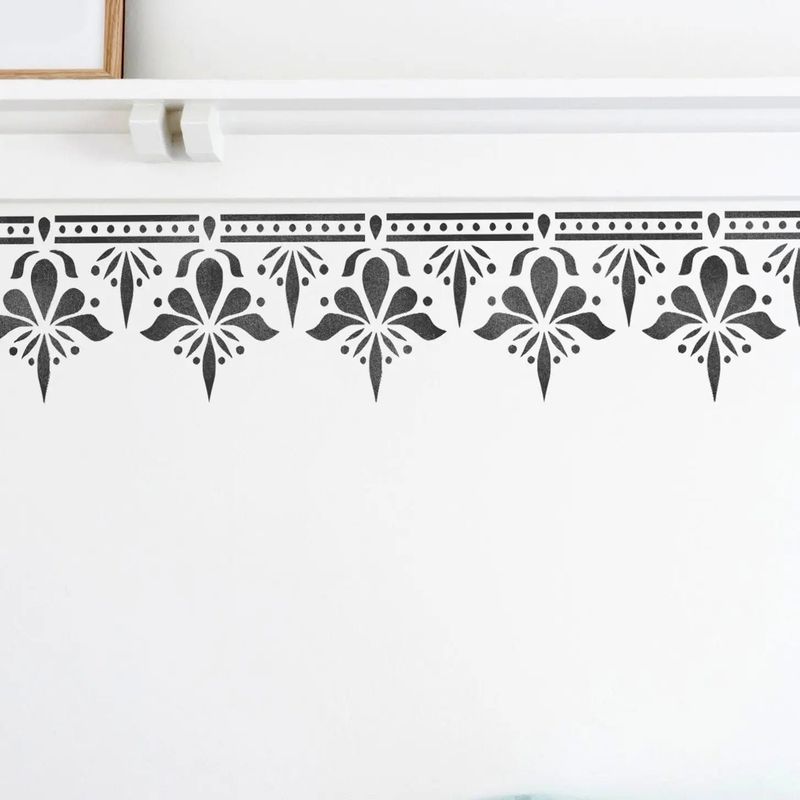
Stenciled borders offer unlimited design possibilities without the permanence of cornicing. From simple geometric patterns to elaborate damask designs, stencils create the illusion of architectural detail with just paint.
Apply your chosen pattern where wall meets ceiling using paint colors that complement your decor. The flat profile works well in any room. For a subtle effect, use a slightly lighter or darker shade of your wall color rather than a contrasting hue.
13. Textured Wall-To-Ceiling Transition
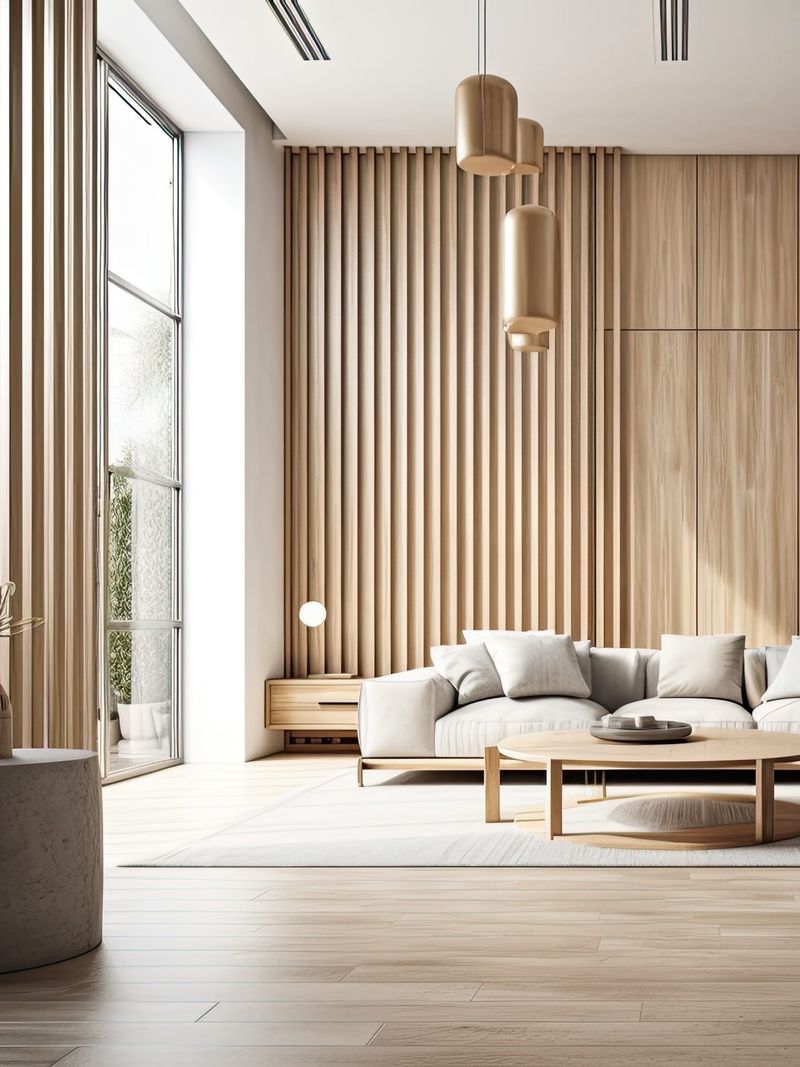
Create interest with textured transitions between walls and ceilings! Techniques like Venetian plaster, sponging, or even textured wallpaper can define this junction without traditional cornicing.
The texture catches light differently throughout the day, adding depth and visual interest. Apply the texture in a band approximately 6-12 inches wide where wall meets ceiling. This approach works beautifully in Mediterranean or Spanish-style homes where organic textures feel right at home.
14. Color Blocking Ceiling Edges

Color blocking creates bold visual interest where cornicing would traditionally go. By painting your ceiling and the top portion of your walls in contrasting colors, you define spaces without adding architectural elements.
Try a dark ceiling with light walls for drama, or extend wall color 12 inches onto the ceiling for a cozier feel. This technique costs nothing but paint! It works especially well in contemporary spaces where clean lines and bold choices make a statement.
15. Macramé Or Woven Wall Hangings
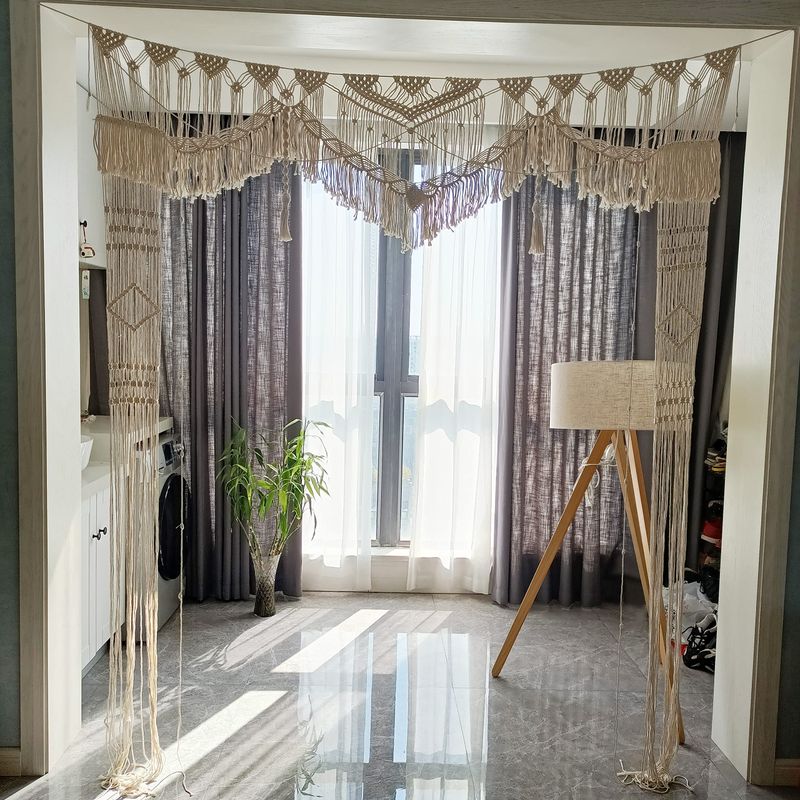
Macramé and woven wall hangings soften the transition between wall and ceiling with organic texture. Hung along the perimeter of a room, these fiber arts create a boho alternative to rigid cornicing.
Choose neutral-colored cotton rope for versatility, or go bold with colored yarns that complement your decor. The gentle swoop and drape of fiber art adds movement to rooms that might otherwise feel static. This approach works beautifully in bedrooms, nurseries, and relaxed living spaces.
16. Neon Or LED Strip Art
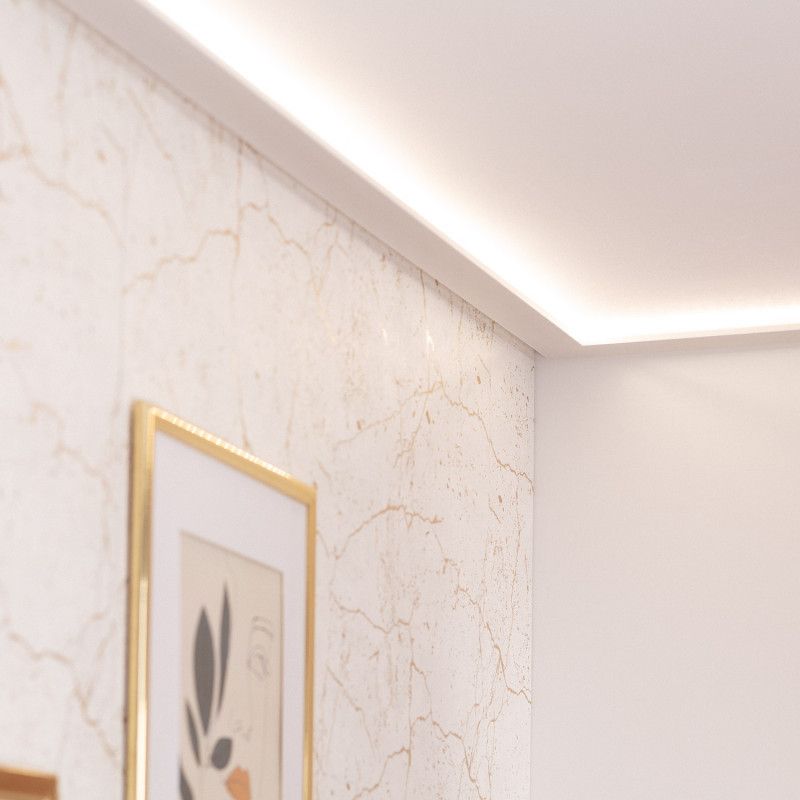
Neon-style LED strips transform ceiling edges into glowing art installations! These flexible light strips can be bent into shapes or run in straight lines where cornicing would typically go.
Modern LED technology offers multiple colors and even programmable effects. The soft glow creates ambiance while defining architectural transitions. This playful alternative works especially well in entertainment spaces, teen rooms, or anywhere you want to inject some personality and fun lighting effects.
17. Hanging Plants Along Ceiling Edges
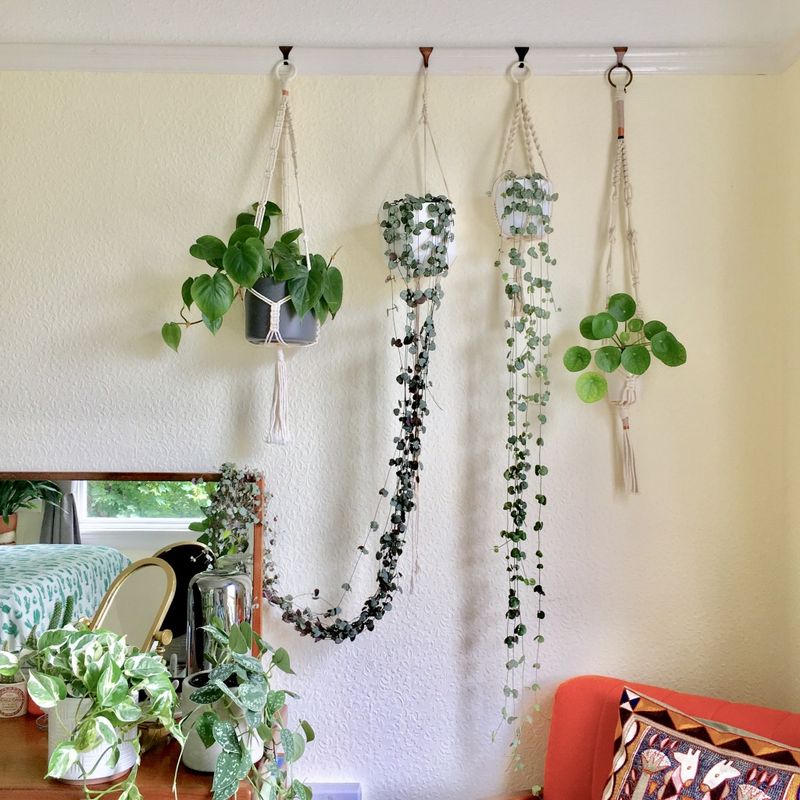
Trailing plants create living cornicing that brings nature indoors! Install hooks or rods near your ceiling to hang plants with cascading foliage that softens the hard edges where walls meet ceiling.
Pothos, ivy, and string of pearls all grow beautiful trailing vines. The organic lines create movement and life where static cornicing would be. This green alternative improves air quality while adding visual interest and works particularly well in rooms with good natural light.
18. Painted Trompe L’oeil Effects

Trompe l’oeil (fool the eye) painting creates the illusion of cornicing without adding actual molding. A skilled painter can create shadows and highlights that mimic three-dimensional architectural elements.
This flat alternative works in spaces where adding bulk isn’t practical. The painted details can be as simple or elaborate as you like. From basic crown molding effects to ornate Victorian-inspired designs, the only limit is your imagination and artistic skill.

